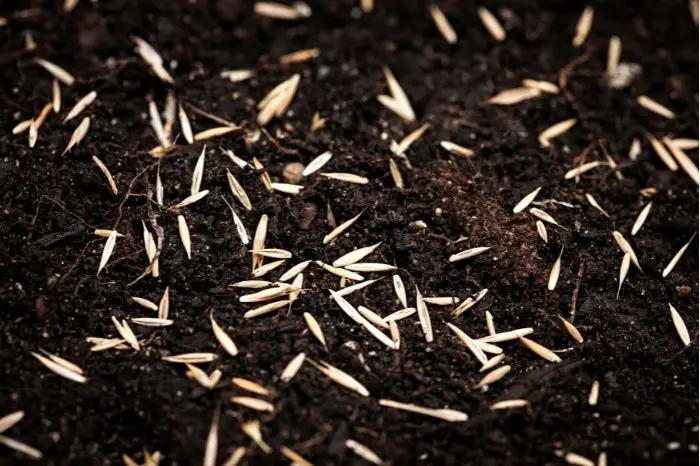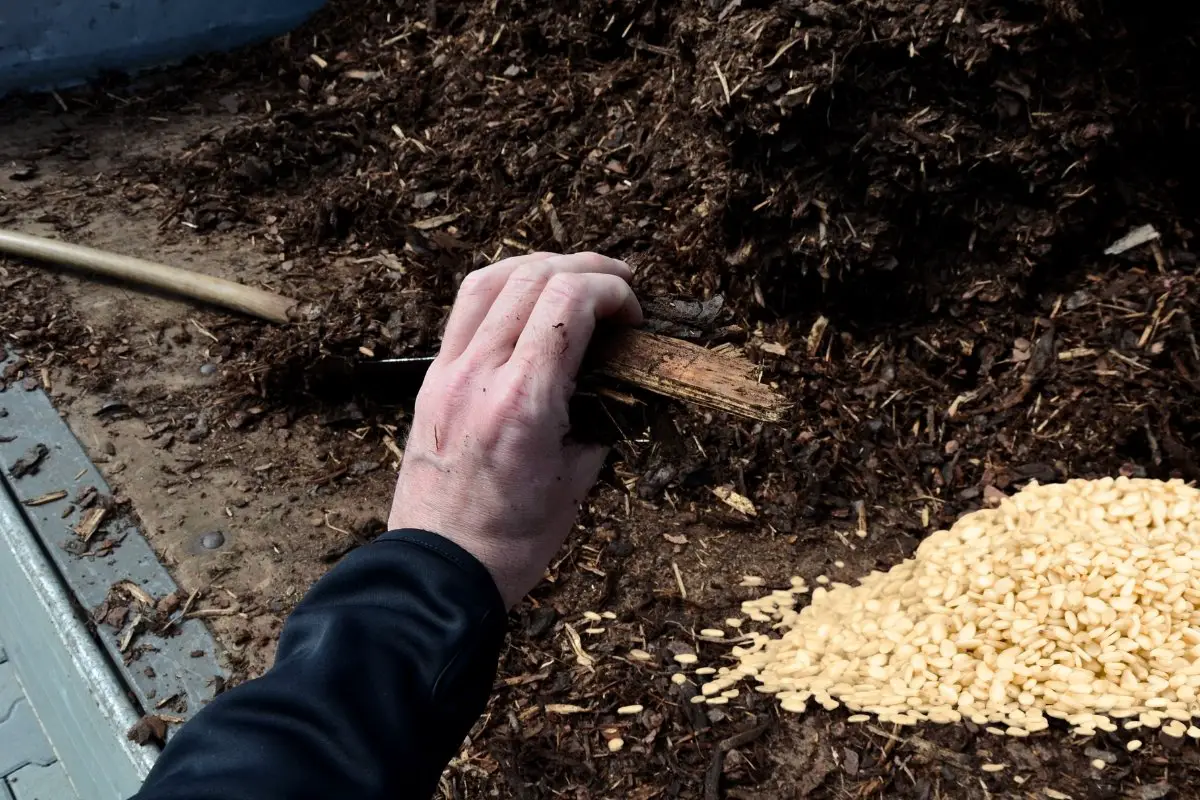Last Updated on September 18, 2022 by Cristina
If you’re stuck wondering: why is my hydroseed not growing? You’ll be happy to know that the reasons are pretty common. Luckily, there are solutions too!
Hydroseeding is a new planting method used to grow beautiful lawns. Whether you applied it yourself or called the professionals, there can be many reasons your seeds want to germinate and grow. Once you’ve identified these, you can do what’s needed to get your hydroseed on track again.
In this article, I explain how hydroseeding works and list why yours might not be growing. I also discuss some other details so you can figure out if you’ve done everything right when you planted them.
How Hydroseeding Works
Hydroseeding is a technologically advanced planting method. The process includes mixing seed and mulch to create a slurry. With a high-pressure hydroseeder tank, you can apply this slurry to your chosen surface.
While sowing a lawn traditionally can make it take up to three weeks to sprout, hydroseeding makes lawns grow within a week or two. The process stops erosion and speeds up seed generation.

Take Out Time to Also Read:
Why Is My Hydroseed Not Growing?
If your hydroseed isn’t growing, this may be why:
Lack of Water
Too little water could lead to growth issues.
If your area reaches temperatures of 70 or more, you should water your hydroseed at least three times daily. While the seeds are germinating, you should water for longer periods less often.
Poor Quality Soil
Hydroseed has particular soil requirements. Ensure there is enough fertilizer, peat moss, and topsoil present.
Uneven Germination – Why Is My Hydroseed Not Growing?
Leave your hydroseed application to the pros.
If your hydroseed has been applied poorly, your seeds may germinate at different times, some not. A slurry mixture that hasn’t been adequately mixed could also be the cause.
Lack of Sunlight
Wherever hydroseed has been applied, ensure the area gets at least four hours of direct sunlight daily. Moss growth is a sure indicator of too much shade. You’ll have to plant your lawn elsewhere if you’re not willing to trim trees shadowing your hydroseed.
Foot Traffic
Too much foot traffic on germinating hydroseed can hinder the process. Avoid walking on the area where it’s been applied until it starts growing.
Simple Lawn Solutions – High Potassium Lawn Food Liquid Fertilizer 0-0-25
Can I Hydroseed On My Own?
While I don’t recommend using this method yourself, it’s possible. You need proper equipment and skills, as well as patience. Hydroseeding can take up to 5 hours of constant work, depending on the area’s size. You’ll need to fully commit before you get started.
Cheap equipment won’t give you the results you hoped for either, so a professional team with the right tools and skills is a better option.
Check Out A Complete Guide On Watering Bulbs For Outdoor Plants
The Best Time To Hydroseed – Why Is My Hydroseed Not Growing?
Spring and fall are the best seasons to start hydroseeding, depending on your area’s specific temperatures.
You need cool temperatures and sunny afternoons. This provides the perfect environment for seeds to grow. Ensure you hydroseed early in the season so your lawn will settle before summer kicks in.
Is Hydroseeding Right For My Lawn?
Hydroseeding is a pretty expensive application. It’s best to choose this for big spaces of up to 3500 square feet or more. This will make it the most cost-effective.
The Advantages And Disadvantages Of Hydroseeding
The Advantages Of Hydroseeding
- Hydroseeding Is Cost-Effective
- If you have a large area to cover, hydroseeding mixes will cost less than dry seeding or sod planting.
- The hydroseed mix will contain everything you need to ensure a healthy lawn, while you’ll have to purchase dry seeds and everything else separately. This can add up real quick!
- Hydroseeding Offer A Quality Lawn
- Hydroseed mixes contain the right amount of mulch and fertilizer to deliver a healthier, good-quality lawn.
- Hydroseeding Prevents Weeds
- The slurry consistency of a hydroseed mixture helps to block weeds that attempt to grow. Hydroseeding also contains fewer weed seeds, to begin with.
The Disadvantages Of Hydroseeding
- Hydroseeding is Heavy on Water
- The hydroseeding process uses a lot of water. On average, you’ll require a ton of water per application. If you have a really large lawn, even more!
- You’ll also have to mist your new lawn two to three times per day.
- Hydroseeding Requires Precision
- If you plan on hydroseeding your lawn, you’ll receive soil preparation instructions that need to be followed precisely. Hydroseeding is also time sensitive, so if your soil isn’t prepared right, the seeds will have to stay in the tank for longer and can occur damage.
- Hydroseeding Can Deliver Inconsistent Colors
- Hydroseeds contain dye to help technicians spot which areas are done. These fade within a day or two, but some residue may stay, causing discolored marks on your grass. Luckily, you can cut these off in time.
In Conclusion, Why Is My Hydroseed Not Growing?
Hydroseeding might seem like the future of planting lawns, but it’s a bit more complicated than traditional ways. It requires a professional application and thorough aftercare to create a healthy lawn.
Without precision, your lawn will look tacky, and your seeds will germinate unevenly. Too little water and sunlight will negatively influence its growth, and you also have to keep foot traffic to a minimum!
I hope this article helped answer your question and that you liked reading it. If you have more questions, ask them in the comments.
FAQ’s
What temperature is best for hydroseeding?
Germinating hydroseed requires temperatures of at least 65 to 75 degrees. Once the grass has been established, it can grow in cooler weather.
What are the disadvantages of hydroseeding?
Hydroseeding can be expensive and doesn't always work out as planned. It won't be as cost-effective if you only cover a small area. You'll also need to employ professionals to do it for you if you want to avoid mishaps.
What helps hydroseed grow?
Hydroseed needs consistent watering and lots of sunlight. If you provide your seed with this in its first few weeks, you'll have a healthy lawn.
When can you fertilize new hydroseed?
You should fertilize your hydroseed once it's 2 inches high. This typically happens within 4 weeks. Applying fertilizer will encourage healthy growth.



